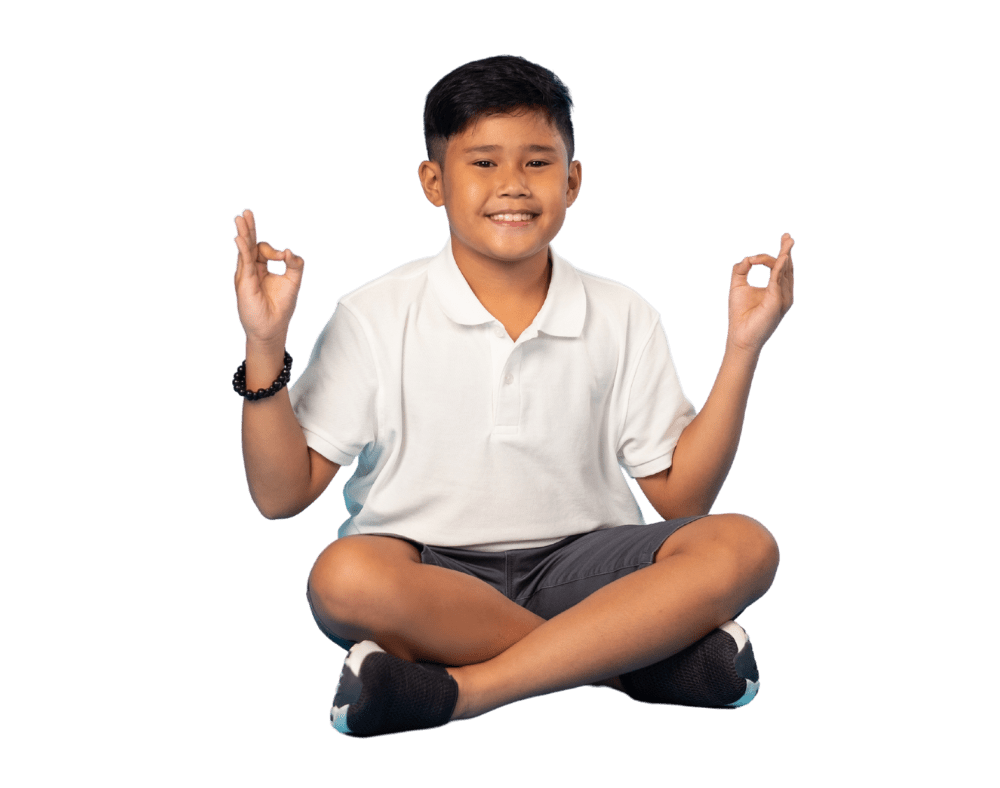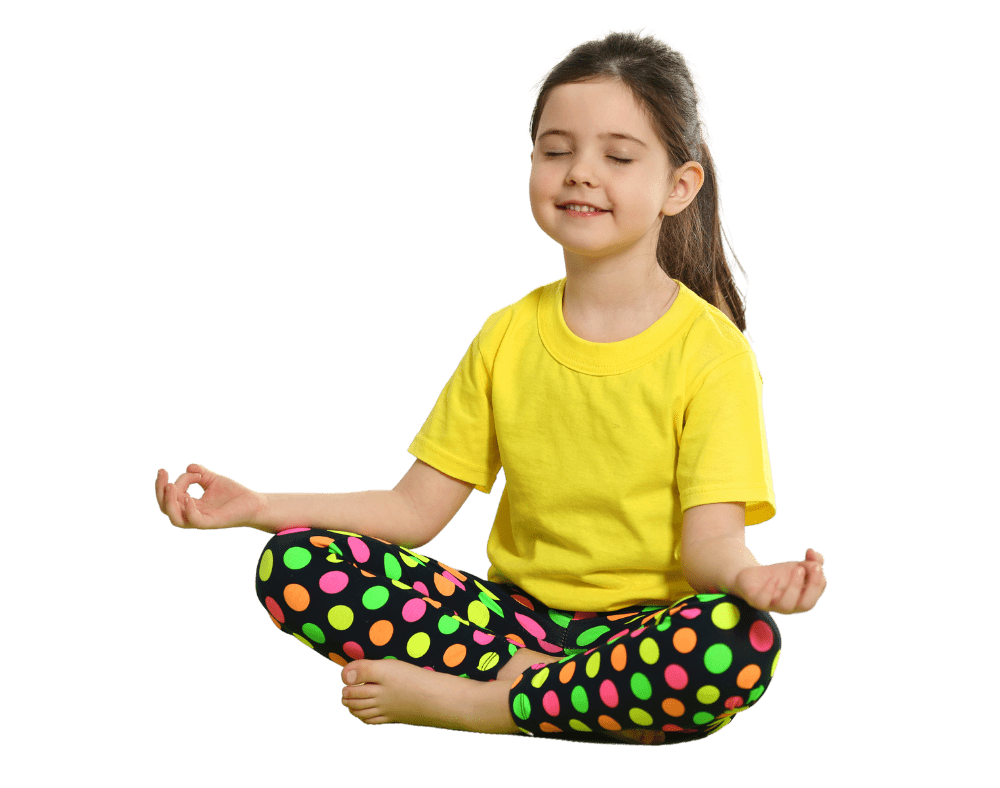The first time your child rolls out her mat in a yoga class, she is exposed to many new words, which shouldn’t be surprising, really. The practice of yoga is from ancient times, 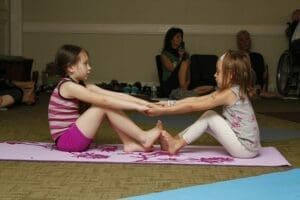 for many of us it is from a foreign culture, and utilizes an unfamiliar language (Sanskrit). And while kids can have a beautiful, effective practice without exposure to the vocabulary of yoga, I believe having a basic understanding of yogic terms and philosophy can take your child’s practice to a whole new level. One of the first words I expose my yoga kids to is ahimsa, or non-violence.
for many of us it is from a foreign culture, and utilizes an unfamiliar language (Sanskrit). And while kids can have a beautiful, effective practice without exposure to the vocabulary of yoga, I believe having a basic understanding of yogic terms and philosophy can take your child’s practice to a whole new level. One of the first words I expose my yoga kids to is ahimsa, or non-violence.
About 400 CE, Patanjali compiled 196 aphorisms about yoga from older traditions, added his own explanations and wrote it all in the Yoga Sutras. In it, he described the eight limbs of yoga (interestingly, none of these “rules” involve the physical practice of yoga postures). The Yamas and Niyamas constitute a set of principles for ancient yogis to live by for an enriching, joyful life. And the very first Yama is ahimsa.
Ahimsa requires a compassion for all living things: the self, other people, animals, and all of nature. To me, it is a guiding principle for my life, and one I continually share with my own children and yoga students.
One way to demonstrate the meaning of ahimsa is through books. The Recess Queen is a picture book about a bully that is eventually shown compassion and learns how to be a friend. This energetic book leads naturally to discussions about fairness and inclusion. After reading it to your
stu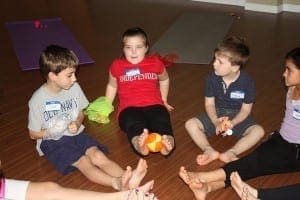 dents, I encourage you to brainstorm some yoga games that would include everyone, and then play them! For example, a game of Orange You Grateful is perfect. Players sit in a circle and pass an orange (or a ball) using only their feet. When a player has the orange in their feet, they share something they’re grateful for by saying, “Orange you grateful for _____?”.
dents, I encourage you to brainstorm some yoga games that would include everyone, and then play them! For example, a game of Orange You Grateful is perfect. Players sit in a circle and pass an orange (or a ball) using only their feet. When a player has the orange in their feet, they share something they’re grateful for by saying, “Orange you grateful for _____?”.
The Great Kapok Tree is a beautiful introduction to caring for our natural environment. In this tale, jungle animals take turns explaining why the great kapok tree should be saved. As you read the book aloud, act out the story using yoga poses. Of course, not every animal in the story has a corresponding pose. That’s when you get to be creative and silly, making up your own poses. Finish up with a round of Joggin’ Thru the Jungle to keep with the rain forest theme.
The idea of nonviolence toward yourself and others can also be taught through partner poses. When doing yoga (or anything!) you don’t want to hurt yourself or your friends. So, you practice ahimsa! Remind kids to move slowly and listen to their bodies and their partner’s voice and breathing. Some of my favorite partner and group poses are:
•Double Boat: Sitting feet-to-feet, children hold hands, press their feet together and sit up, each in a ‘V’ shape.
•Dog House: One child does Downward Facing Dog while the other crawls underneath to rest in the doghouse. Then switch roles.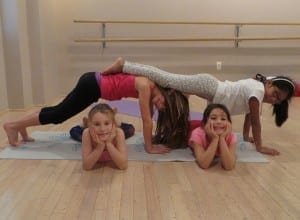
Meditation is another way to teach ahimsa. “Peace Begins With Me” (or PBWM) is a simple meditation. Begin seated and bring both index fingers to the thumb pads (like the OK sign). Say, “peace.” Then bring the middle fingers to the thumbs and say, “begins.” The ring fingers are next saying, “with.” And the pinkies finish with, “me.” Repeat the words and gestures several times out loud, and then become quieter and quieter, until you are whispering. Eventually, the words are only spoken in your head, but your fingers still move. I would also suggest introducing the Loving-Kindness meditation. (There is an article about the meditation and how to teach it here.)
Lastly, I encourage you to teach ahimsa through song. A favorite song among yogis is May the Longtime Sun. It is a simple, lovely song to wish yourself and others wellness and joy.
Like what you read here? There’s so much MORE to explore and learn with Kidding Around Yoga. Check out our website for our live and online teacher trainings, Yoga Alliance-approved 95-hour RCYT trainings, specialty online courses, original music, merchandise, and beyond! Learn more about yoga philosophy and how to teach it to children with KAY’s online specialty course, Raja Yoga.

